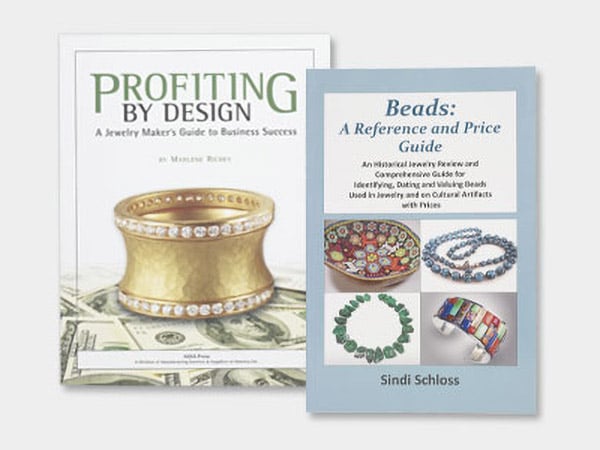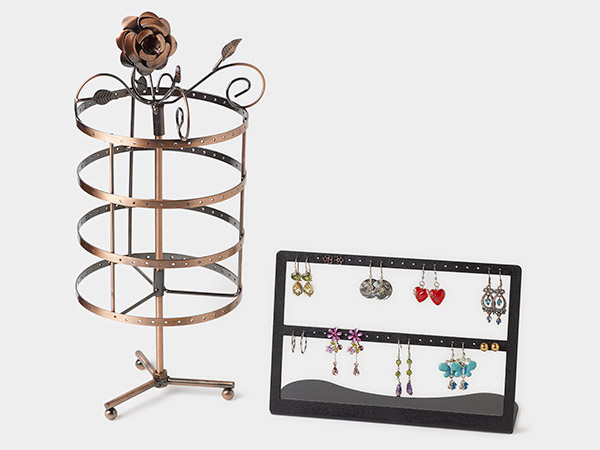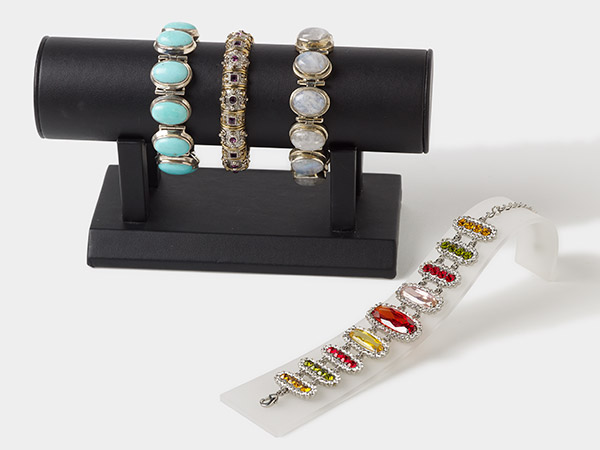Can Your Craft Business Support a Family?
by Patrice Lewis
If you're tired of commuting to an office job and dealing with a boss, it's worth examining whether or not you can do something extraordinary: make a living and support your family solely by the efforts of a home craft business. It sounds like a fantasy — but can it become a reality? Yes and no.
There are around 115,000 craftspeople in the U.S. (numbers vary from 106,000 to 126,000), and 22 percent of them are entirely supported by their craft business. Yes, that fantasy can become a reality.
How can you tell if your particular craft will support a family? Keep in mind not all crafts are suitable for turning into a successful business. But these dreams of supporting a family from your hobby are frequently laced with a heavy dose of unrealistic expectations about the craft's money-making potential. Here are some criteria to determine if your craft can support you.
Find a niche
Finding your unique niche will probably be the single most enormous hurdle to overcome. Can you find that empty niche and create a product to fill it?
The reason this is so difficult is people often focus on making crafts they themselves like, without considering either (a) what the competition is for that particular craft, or (b) how many others share that interest. Sometimes a person becomes so enamored of his or her own particular product that they either won't do the necessary market research to determine if their product is saleable, or they ignore what their market research tells them.
Assembly-line production
No matter how unique or how large your niche is, it won't do you any good unless you can make your craft fast enough to meet demand.
If you can only make one of your craft items per week, you won't be able to support your family with your craft. The secret is to be able to make your craft rapidly enough that you can sell them for a moderate price.
The products most likely to be able to support your family can be made quickly and efficiently without a loss of quality. If your craft lends itself to assembly-line manufacturing, you stand a much better chance of succeeding.
Wholesale vs. retail?
Where do you sell your products? Do you go to craft shows and sell them yourself? Do you place them in stores? Do you sell them online? The issue of how to market your product will come down to determining if your craft business will be wholesale or retail.
A retail business means that you, yourself, are selling the item. YOU go to the craft shows. YOU open the store front. YOU start the webpage. You, you, you.
The trouble with this, of course, is that while YOU are selling your item, YOU are not making any new items. The time it takes to sell your product is time away from the production of new product.
Switching from retail to wholesale may be the key. By selling wholesale, the vendor doesn't have to worry about the time and expense associated with making the craft, and the crafter doesn't have to worry about the time and expense of being away from home. It's a win-win situation.
Statistics have demonstrated that, while most crafters still prefer retail shows, more revenue is generated from wholesale markets. Wholesaling accounts for 27 percent of annual sales for crafters.
So, if your craft product lends itself to assembly-line production, it behooves you to consider developing the wholesale side of your business. You stand a much higher chance of succeeding in a home-based business if you can stay home.
Catering to passions
Another secret to building a successful home craft business is to be able to cater to peoples' passions. Remember this: People are fanatic about their hobbies.
Your next-door neighbor might be CEO of the local bank--it's what he does for a living--but by golly what really makes his eyes sparkle is talking about the 1911 Model T Ford he's restoring. He will spend thousands of dollars and endless hours of time tinkering on that old car. You--the crafter--have the potential to cash in on that kind of passion in two possible ways.
First, you must target your marketing appropriately. You won't do well selling your hand-crafted lace-doilies and crocheted doll dresses at a motorcycle rally. Motorcycle people are not passionate about lace doilies. It's not a marketing match.
Second, if you can modify your craft to cater to passions, then you gain a lot of flexibility to cross-target your market. If you take your selection of handmade candles to a candle show, for instance, then you're surrounded by nothing but other candle-makers. However, if you take your specialty Elvis/tractor/ airplane/cat/speedboat/whatever candles to events that cater to people who love Elvis, tractors, airplanes, cats, or speedboats, then people will buy them.
This is why T-shirt vendors do so well--they can modify their product to cater to whatever market they're selling at by silk screening appropriate slogans and pictures. If you can do the same with your product, your sales will increase.
Don't quit your day job--yet
When building a craft hobby into a craft business, you need to recognize it takes time to build your base and become successful. You don't want to quit your day job and plunge into the financial uncertainty of a startup craft business until you have a solid fiscal foundation.
This is especially important because of non-negotiable expenses such as rent or mortgage, utilities, food, etc. You don't want to jeopardize your income to the point where you can't pay your bills on the touching hope that your craft business will be an instant success. Build your craft business on the side and see if it works before you quit your day job.
Live frugally
Until your craft business is successful, you must live below your means. It does no good to blow your early profit on luxuries like electronics or restaurant meals. Learn to live frugally.
So, before you take the plunge into a home craft business, ditch the debt. Take the time to pay off that credit card, pay down your student loans and vehicle loans, and otherwise watch your spending. You have a much better chance of succeeding with a home craft business if you are not tottering under the load of debt from your more lavish days.
Self-motivation
It's one thing to put your spare time into a hobby. It's another thing to apply yourself full-time to a home craft business. Can you motivate yourself?
Motivation is easy to come by when you're just making a few of your craft items. But will you feel the same way when you've been working 20 hours per weekend, every weekend, making your product? And what about boring stuff like keeping accurate records for tax purposes? What about market research? What about advertising? What about all the not-so-fun things that are absolutely necessary for a business to be successful?
At the office, a boss and a paycheck are your motivation. But when you don't have anyone looking over your shoulder, you need to provide the motivation yourself. If you find yourself sleeping late and playing solitaire on the computer rather than facing your shop full of half-finished product, better rethink your plans to go into business for yourself.
The dreaded business plan
A formal business plan may not be essential for a home craft business, but it helps to have goals written down, as well as the means to achieve those goals. Somehow when things are in black and white, they're more doable. Or, more tellingly, you'll decide they aren't doable. A business plan also lets you see where the "holes" are in your goals (such as market research).
Act professional
It never fails to amaze me how those with a home craft business somehow think they're excluded from the need to act professional.
Your preschooler may have the most adorable lisp this side of the moon, but that doesn't mean he has to answer the phone during work hours. Just as you wouldn't meet a client for lunch dressed in your pajamas, you probably shouldn't answer your door that way either. Don't print business cards full of froufrou and frills unless your business specializes in froufrou and frills.
In other words, when someone parts with his money to buy your product, they expect to deal with a professional. Be one.
Learn to Talk
Learning to sell your product is obviously an integral part of your business. However, a surprising number of people aren't able to talk about their product with enthusiasm, knowledge or salesmanship.
Learn to sell your product through speech. If you can't discuss with animation and enthusiasm the merits of your craft, how can you expect anyone else to listen or agree? Or buy?
Realistic expectations
By looking at your product rationally and unemotionally, you will be able to recognize what crafts have the potential to grow into a successful business, and what should stay a hobby. This is often difficult. We love our hobbies and our crafts, and that's why we have dreams of turning them into a successful business. To suggest that not enough people are interested in buying our crafts is ... well, insulting. It will save you a lot of grief in the end if you can distinguish between what can support your family, and what should be just a weekend hobby of earning pocket change at local crafts shows.
Statistics
- In 2018, there were approximately 50,000 full-time crafters in the U.S., with millions more selling their craft part-time.
- Approximately 30 percent of crafters report that craft income was their only source of household income.
- 87% of crafters are women. The craft categories near gender parity are painting/drawing, and woodcrafts/home décor.
- A crafter's average age is 39, compared to a business owner's average age of 50.
- 90% of crafters own their own business. Those who partner up usually work with family members.
- About 50% of crafters are suburban. The rest are split between urban and rural.
- The creative industry in the U.S. earned about $44 billion in 2016, up from $30.1 billion in 2011.
- In 2019, the median pay for crafters was $48,960 per year, or $23.54 per hour.
Have a question regarding this project? Email Customer Service.
Copyright Permissions
All works of authorship (articles, videos, tutorials and other creative works) are from the Fire Mountain Gems and Beads® Collection, and permission to copy is granted for non-commercial educational purposes only. All other reproduction requires written permission. For more information, please email copyrightpermission@firemtn.com.





